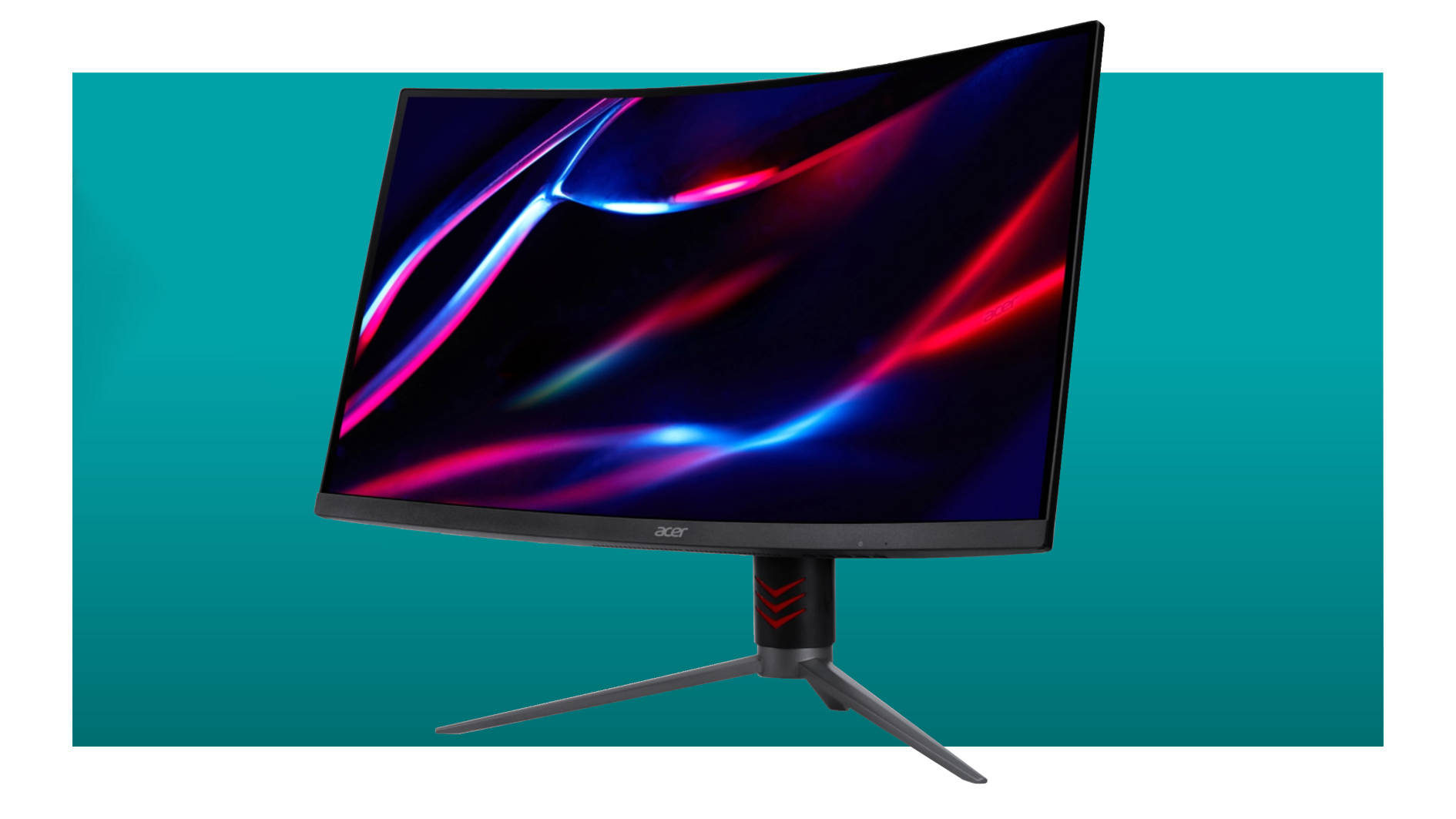Go big or go home, with this 32-inch 1440p 240Hz gaming monitor that's under $270 right now
Or if that's too big, how about 27 inches for $50 less?

Acer Nitro XZ323QU | 31.5-inch | 1440p | 240Hz | VA panel | 1000R curve | $449.99 $269.99 at Newegg (save $180)
There's nothing quite like a massive, curved monitor for the ultimate in gaming immersion, but they're usually mega expensive. Not this Acer model and you're getting an awful lot of monitor for very little money. Curved screens aren't to everyone's taste, though, and it won't have quite the same color reproduction as an IPS panel.
Price check: Best Buy $299.99 | Amazon $329.99 | Walmart $269.99
A decent gaming monitor should last you for many years, so it's always worth paying that little bit more to ensure you get something that will meet your current or potential future needs. On the other hand, sometimes you get a deal like this, where you're getting a fantastic monitor without having to spend a fortune.
Let's start with the basics. It's a 31.5-inch screen (let's just call it 32-inches, okay?) with a resolution of 2560 x 1440. That's as large a panel as you'd ever want to go with a 1440p layout and even then, the pixel density is a little on the low side if you're looking for ultra crisp fonts and icons on your Windows desktop.
But for gaming, it's a glorious, view-filling experience. Adding to all of that is the 240Hz refresh rate, with support for FreeSync Premium and its variable refresh rate (VRR). So even if your games can't run at 240fps, the VRR will ensure the monitor's output will always look super smooth.
It's worth nothing, though, that the full 240Hz is only available via the DisplayPort connection. The two HDMI ports are version 2.0 connections and so can only offer 144Hz, which honestly is still perfectly decent.
The panel itself is a VA type, so while not the best for color reproduction, it's bright and has a great contrast ratio. That's ideal for its black representation to look more genuinely black, rather than some kind of washed out shades of grey. The screen is also VESA HDR400 certified, with a peak brightness of 400 nits.
That's the minimum level of HDR support you'd want in a gaming monitor and while games such as Cyberpunk 2077 can still look good in HDR mode—even some DisplayHDR 400 screens—it won't look anywhere near as nice as on the best OLED monitors. Good luck finding one of those for under $300, though. Essentially, though, this is not the screen for you if you're desperately looking for a great HDR experience.
Rounding off the nice collection of specifications is a stand that offers 30 degrees of tilt, four inches of height adjustment, and 60 degrees of swivel. It can't rotate by 90 degrees, because the screen has a tight, 1000R curvature to it. Again, not so hot for office and content creation work, but really nice for gaming.
There are no USB ports to expand your gaming PCs connectivity potential but at least there are a couple of 3W speakers built into the monitor. They won't be amazing but better than nothing at all if your headset gives up the ghost.
Finally, if 32 inches is just too big for your desk or gaming habits, then there's a 27 inch version that's $50 cheaper. Looking for a large, fast, sweet-looking gaming monitor for well under $300? Then you can stop your search because this one ticks all of the right boxes, and it's $30 less than what is was in last year's Black Friday sales!
Keep up to date with the most important stories and the best deals, as picked by the PC Gamer team.

Nick, gaming, and computers all first met in 1981, with the love affair starting on a Sinclair ZX81 in kit form and a book on ZX Basic. He ended up becoming a physics and IT teacher, but by the late 1990s decided it was time to cut his teeth writing for a long defunct UK tech site. He went on to do the same at Madonion, helping to write the help files for 3DMark and PCMark. After a short stint working at Beyond3D.com, Nick joined Futuremark (MadOnion rebranded) full-time, as editor-in-chief for its gaming and hardware section, YouGamers. After the site shutdown, he became an engineering and computing lecturer for many years, but missed the writing bug. Cue four years at TechSpot.com and over 100 long articles on anything and everything. He freely admits to being far too obsessed with GPUs and open world grindy RPGs, but who isn't these days?


